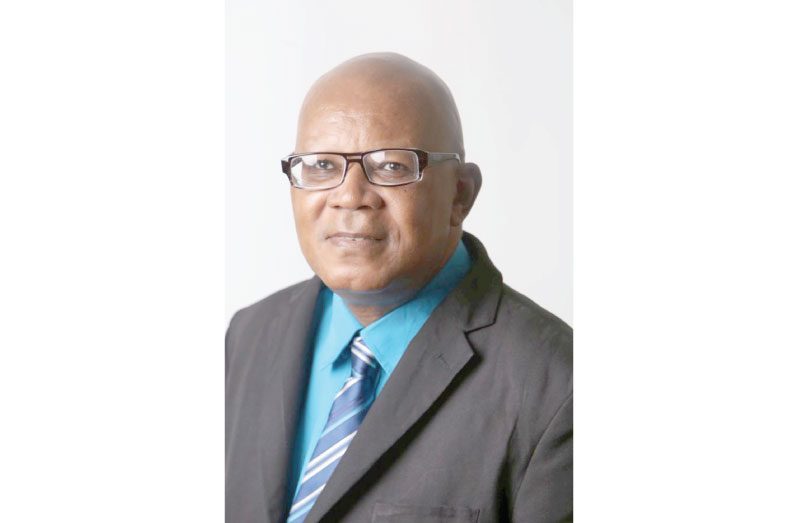By Lisa Hamilton
A PROPOSAL regarding the installation of 200 Information and Communications Technology (ICT) hubs to Hinterland, Poor and Remote Communities (HPRCs) in Guyana has been sent to the Office of the Prime Minister (OPM) for review, with hopeful commencement in September 2020.
In an interview with Guyana Chronicle on Tuesday, HPRC Information and Communications Technology (ICT) Project Manager, Phillip Walcott, said all equipment have arrived in the country and underwent the necessary checks on Tuesday before final payment was transferred.
At a previous stakeholder consultation of the Tourism Recovery Action Committee (TRAC), Walcott had relayed that the arrival of the equipment had experienced delays due to the COVID-19 pandemic.

The equipment, which all hubs will possess, include Very Small Aperture Terminals (VSATs); all-inclusive solar solutions; approximately 12 laptops; one printer and scanner; one 32-inch television; monthly VSAT bandwidth and network services free of cost and security lights and cameras.
The communities identified for the establishment of ICT hubs are as follows: Region One – 22; Region Two – 7; Region Three – 7; Region Four – 15; Region Five – 2; Region Six – 4; Region Seven – 33; Region Eight – 21; Region Nine – 52 and Region 10 – 37.
A total of 82 out of the 200 already possess connectivity either through VSAT or through GTT or Digicel. In the proposal sent to the OPM, and awaiting feedback, it was recommended that those 82 communities be given priority. Walcott said that these communities are mostly located in the hinterland regions such as Region Nine. However, priority will also be given to easily accessible communities.
With the challenges associated with COVID-19 in Guyana, the National Data Management Authority (NDMA) — responsible for the installation of the hubs — will have to receive approval from the government to visit certain Regions and, once authorised, must adhere to strict health protocols.
“In some communities, we may not be able to enter because of their high level of COVID-19 restrictions and those are the kind of decisions that we are undertaking as we work out the details of the plan. We’ll make sure that, before the officers go in, each person is tested and cleared and we’ll be using our transportation so there’s no risk of mixing with others,” the ICT project manager explained.
MONITORING COVID-19
Several indigenous villages across Guyana have constructed closed gates at the entrance of their villages, for the very first time, in order to monitor visitation to curb the spread of COVID-19.
When it comes to transporting the large amount of equipment, it is likely that previous methods will be utilised whereby the equipment is transported in bulk to a bond or store house in the region and NDMA staff then visits those locations for distribution to individual communities with the help of land cruisers.
Walcott sees the installation of the ICT Hubs across the country as timely and crucial to the fight against the coronavirus. He said: “One of the challenges of this COVID-19 situation is the lack of communication in these communities. We will now be able to have direct contact with them and therefore they can report, in real time, when these situations develop in these villages as against waiting for a message to come out.”
On the issue of training, Walcott reminded that there are NDMA offices in Regions One, Two, Three, Four, Five, Six, Seven and 10 and staff from these offices can assist with training.

When an ICT Hub is established in a community, residents are allowed to elect a Monitoring and a Management Committee made up of members of their community. The two committees ensure the proper management of the equipment and assist with training, while NDMA staffers also assist with the upkeep or repair of the equipment.
Meanwhile, a community development officer is assigned to each hub and is required to visit the hub once every fortnight and submit a report, while a technical officer must report on the state of the equipment.
Th HPRC Information and ICT project manager is pleased that, over the years, of all the hundreds of ICT Hubs established, there have been very few reported cases of mismanagement.
Walcott said: “One of the things we’ve said to them is we don’t have the resources to keep replacing if you lose it. So, you have got to take care of it to ensure that you don’t have those problems.”
The workplan put forward in the proposal runs from September to December. However, the ongoing review and subsequent feedback from the NDMA and Prime Minister’s Office will determine whether the timeline and its specifics are given the September ‘green light’.




.png)









